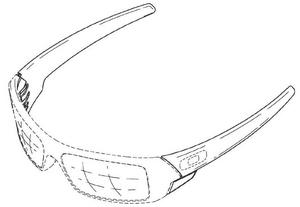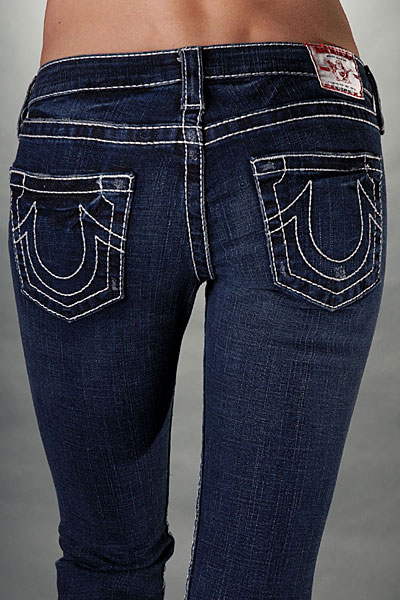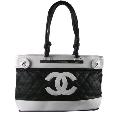Santa Ana, CA – Oakley’s trademark and patent attorneys filed a patent infringement, trade dress infringement, and trademark infringement complaint at the Federal District Court in Santa Ana to stop copying of protected sunglasses/eyewear. Oakley registered its stylized ellipsoid “O” logo trademark with the U.S. Patent and Trademark Office (“USPTO”) for use on goods in International Class 9 (e.g. eyewear, sunglasses,and goggles). Oakley also registered its stylized ellipsoid “O” logo as used on the side of a sunglass ear-stem with the USPTO. As further protection, the USPTO issued U.S. Patent No. D556,818, titled “Eyewear Components,” which protects the design and ornamentation embodied by Oakley’s Gascan sunglass.
 The complaint alleges that Outlook Eyewear has “advertised and sold counterfeit products bearing a reproduction or copy of the trademarks, which mark is an unauthorized reproduction of Oakley’s famous ellipsoid “O” mark intended to cause a likelihood of confusion or to deceive or otherwise capitalize upon Oakley’s goodwill.” The complaint also alleges that Oakely has obtained trade dress protection in the design of its Gascan line of sunglasses because of the expenditure of large sums of money in its promotion and, as a result of which, it “has become, through widespread public acceptance, a distinctive designation of the source of origin of goods offered by Oakely and an asset of incalculable value as a symbol of Oakley and its quality goods and good will.” In addition to preliminary and permanent injunctions, Oakley seeks monetary damages and its attorneys’ fees. The case is titled Oakley, Inc. v. Outlook Eyewear Company, SACV 08-00439 JVS (C.D. Cal. 2008).
The complaint alleges that Outlook Eyewear has “advertised and sold counterfeit products bearing a reproduction or copy of the trademarks, which mark is an unauthorized reproduction of Oakley’s famous ellipsoid “O” mark intended to cause a likelihood of confusion or to deceive or otherwise capitalize upon Oakley’s goodwill.” The complaint also alleges that Oakely has obtained trade dress protection in the design of its Gascan line of sunglasses because of the expenditure of large sums of money in its promotion and, as a result of which, it “has become, through widespread public acceptance, a distinctive designation of the source of origin of goods offered by Oakely and an asset of incalculable value as a symbol of Oakley and its quality goods and good will.” In addition to preliminary and permanent injunctions, Oakley seeks monetary damages and its attorneys’ fees. The case is titled Oakley, Inc. v. Outlook Eyewear Company, SACV 08-00439 JVS (C.D. Cal. 2008).
 Los Angeles Intellectual Property Trademark Attorney Blog
Los Angeles Intellectual Property Trademark Attorney Blog


 Guru Denim owns a
Guru Denim owns a  Plaintiff asserts that Defendant “Rangefinder intends to use the designation World Imaging Expo for tradeshows in the field of professional photography” and that Plaintiff became aware of the competing tradeshow when it discovered a copy of the World Imaging Expo convention program guide. Professional Photographers also discovered that Rangefinder had filed an intent-to-use trademark application with the USPTO. Professional Photographers asserts that it sent a cease and desist letter to Rangefinder over the use of the World Imaging Expo trademark, but Rangefinder refused to withdraw its pending trademark application or stop using the trademark. Thus the complaint was filed asserting causes of action for federal trademark infringement under 15 U.S.C. § 1114, false designation of origin and false representation under 15 U.S.C. § 1125(a), and unfair competition under California common law and statutes. The case is titled Professional Photographers of America, Inc. v. Rangefinder Publishing Co., CV08-02324 SVW (C.D. Cal. 2008).
Plaintiff asserts that Defendant “Rangefinder intends to use the designation World Imaging Expo for tradeshows in the field of professional photography” and that Plaintiff became aware of the competing tradeshow when it discovered a copy of the World Imaging Expo convention program guide. Professional Photographers also discovered that Rangefinder had filed an intent-to-use trademark application with the USPTO. Professional Photographers asserts that it sent a cease and desist letter to Rangefinder over the use of the World Imaging Expo trademark, but Rangefinder refused to withdraw its pending trademark application or stop using the trademark. Thus the complaint was filed asserting causes of action for federal trademark infringement under 15 U.S.C. § 1114, false designation of origin and false representation under 15 U.S.C. § 1125(a), and unfair competition under California common law and statutes. The case is titled Professional Photographers of America, Inc. v. Rangefinder Publishing Co., CV08-02324 SVW (C.D. Cal. 2008). Plaintiff alleges that Defendant’s website,
Plaintiff alleges that Defendant’s website,  The complaint alleges that defendants are selling lower quality imitations of Chanel’s handbags and wallets, which bear counterfeit Chanel trademarks. The complaint asserts that the Defendants are offering the counterfeit goods on their websites: www.gqbags.com and www.ultimatehandbags.com. The websites offer handbags for sale that are substantially less expensive than authentic Chanel products. “The net effect of the Defendants’ actions will be to result in the confusion of consumers who will believe the Defendants’ Counterfeit Goods are genuine goods originating from and approved by Chanel.” Chanel believes that the defendants are engaging in the sale of counterfeit goods intentionally and willfully. The complaint alleges causes of action for trademark infringement and counterfeiting under section 32 of the Lanham Act, 15 U.S.C. § 114, and false designation of origin and unfair competition under section 43(a) of the Lanham Act, 15 U.S.C. § 1125(a). The case is titled: Chanel, Inc. v. Kimberli Hunter, et al., CV08-02226 GHK (C.D. Cal. 2008).
The complaint alleges that defendants are selling lower quality imitations of Chanel’s handbags and wallets, which bear counterfeit Chanel trademarks. The complaint asserts that the Defendants are offering the counterfeit goods on their websites: www.gqbags.com and www.ultimatehandbags.com. The websites offer handbags for sale that are substantially less expensive than authentic Chanel products. “The net effect of the Defendants’ actions will be to result in the confusion of consumers who will believe the Defendants’ Counterfeit Goods are genuine goods originating from and approved by Chanel.” Chanel believes that the defendants are engaging in the sale of counterfeit goods intentionally and willfully. The complaint alleges causes of action for trademark infringement and counterfeiting under section 32 of the Lanham Act, 15 U.S.C. § 114, and false designation of origin and unfair competition under section 43(a) of the Lanham Act, 15 U.S.C. § 1125(a). The case is titled: Chanel, Inc. v. Kimberli Hunter, et al., CV08-02226 GHK (C.D. Cal. 2008).